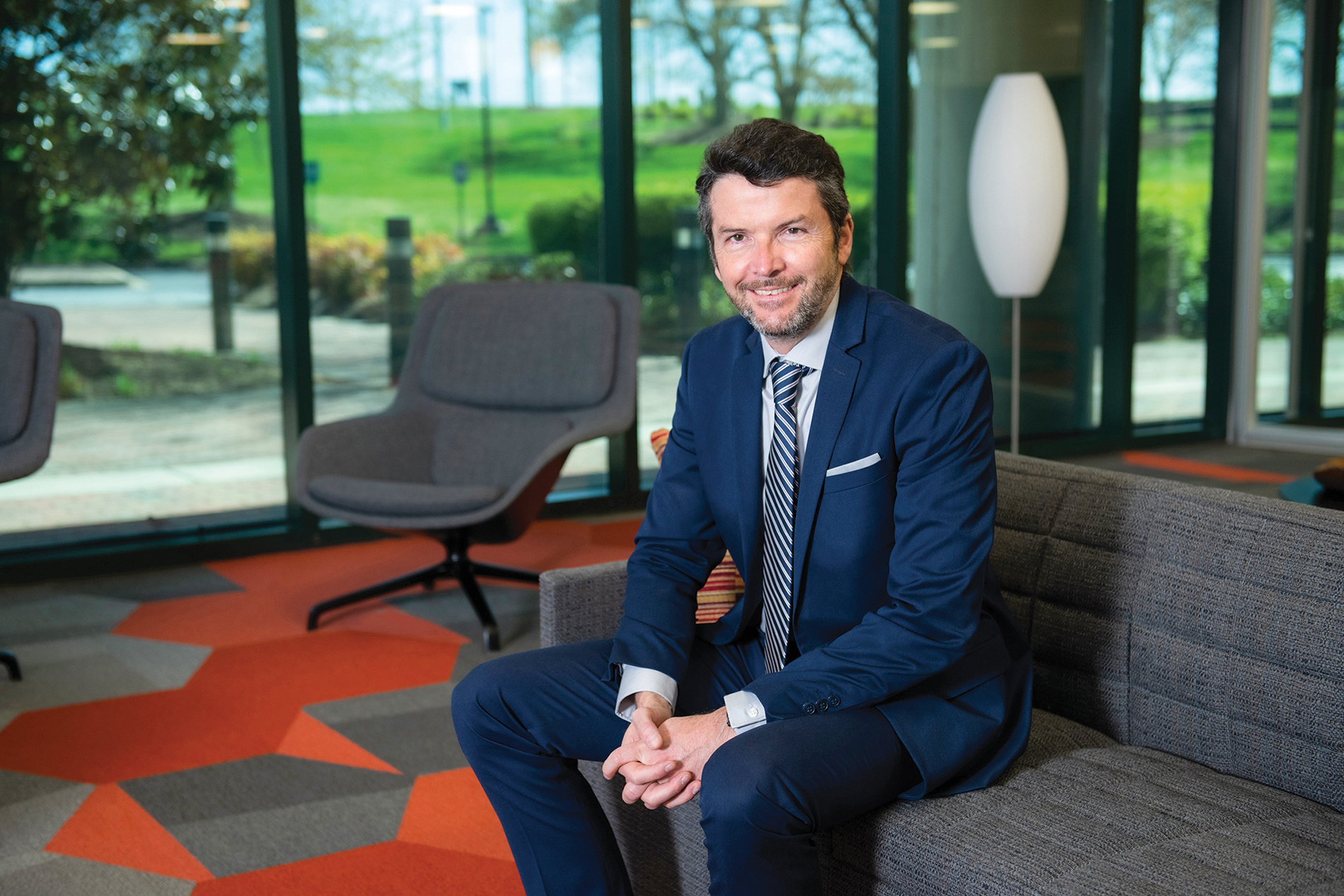- Achieving Your Critical & Essential Results
- Enterprise Transformation
- Featured
- Insigniam Perspectives
- IQ Insigniam Quarterly® Magazine
Don’t Let Your Transformation Fail
In 1980, Nobel Prize-winning physicist Giorgio Parisi revealed groundbreaking findings regarding concealed patterns within disordered complex materials. These discoveries significantly advanced the understanding of complex systems, offering insights applicable not only to physics but also to the fields of mathematics, biology, neuroscience, and machine learning.
Four decades later, Parisi published In a Flight of Starlings: The Wonders of Complex Systems in 2021, which ventured into an unexpected realm—the flight patterns of starling bird flocks. His study illuminated how the action of a single starling could set off cause-and-effect loops, altering the entire flock’s flight pattern without the awareness of others.
Like starlings, individuals—through actions like conversations with other people, engaging in social media, or viewing a favorite news outlet—can trigger collective actions that ripple through a market. Applying these concepts to organizations, where individuals make independent decisions, mirrors a single bird’s ability to alter a flock’s flight pattern.
For Parisi, an understanding of econophysics (which examines how individual actions trigger cause-and-effect feedback loops, akin to one bird’s movement changing a flock’s flight pattern) paired with his knowledge of complexity afforded him insight into how change is affected at scale.
We all know that predicting human behavior within organizations is inherently challenging. Yet we don’t have a way to account for this in managing big change or transformation. Many transformation efforts fail because leaders attempt to approach organizations as linear and predictable entities. Organizations, akin to starling flocks, embody complex adaptive systems.
Simply defined, complex adaptive systems are made up of many individuals—often referred to as agents. As each agent interacts with another agent and with situations and circumstances, they each evolve and shift, almost nothing is static. These agents, in turn, interact with other agents, situations and circumstances and again they change and shift. As you can see, in this type of system, nothing stays the same and anything can have (and most often does have) an impact on everything.
In an enterprise, complexity arises from dynamic changes—including both internal and external forces—such as globalization, competition, workforce diversity, and innovation, among other variables. Through this definition, we can begin to understand the nature of how complex adaptive systems manifest in the real world.
Mastering Complexity
As the system’s dynamic is non-linear, it is almost impossible to predict or command the actions, thoughts, and perceptions of the thousands of agents engaged in the internal and external systems. In reality, all organizations are complex adaptive systems.
Emergence is that which arises out of chaos—patterns, behaviors, or outcomes arise, due to (often simple) interactions of the constituent parts with each other and the surrounding environment. Here, there is no “leader” deciding on the behavior of the system. Yet, intentional leadership can guide this chaos to build a framework for successful transformation.
Moreover, in complex adaptive systems, it’s essential for leaders and teams to challenge linear, cause-and-effect assumptions. One of the reasons most organizations fail to realize their goals for transformation is because processes are viewed as direct systems that advance from one logical stage to another.
For enterprise transformations to succeed, leaders must first approach their organizations as dynamic, non-linear ecosystems. They must then gain insight into the currently-in-place, often not-formally-set rules that organize the behaviors and thinking in the area they seek to transform. Once distinguished or revealed, these rules need to be disengaged or neutralized. Only then can leaders invent new solutions and integrate them into the framework of an enterprise.
In Engaging Emergence, Peggy Holman defines emergence as the creation of new, organized structures from chaos through interactions within a system. This process occurs when interactions disrupt the system, leading to novel outcomes. To navigate this complexity, organizations must establish a strategic frame that fosters the emergence of their desired future. Key components include:
- Empowering Context: Creating a motivating environment where employees are committed to an inspiring future, even without guarantees. This context shapes perceptions and actions, driving the execution of strategic plans.
- Coordination and Alignment: At all levels, people must share a commitment to the future and adapt their ways of working. Protocols for unexpected situations ensure resilience in execution.
- Integrity and Accountability: Executives must encourage transparency and accountability during strategy execution. Acknowledging that plans may need adjustment fosters adaptability and prevents blame-shifting when issues arise.
Effective strategy execution involves engaging with circumstances as they unfold, adapting to shifts, and leveraging opportunities. Executives relinquish strict control in favor of empowering employees to achieve extraordinary results, even amid uncertainty. This approach, grounded in integrity and accountability, allows organizations to navigate complexity and realize their strategic goals.
Setting the Conditions for Change
Today’s business environment is defined by steady, relentless change. The ability to embrace and instill change quickly and effectively has become a core corporate competency. But in our experience, most organizations have not mastered the art of change. They lack the proper focus, dooming organizational shifts—both big and small—before they even begin. The ability to embrace and instill change quickly and effectively has become a core corporate competency; one that necessitates leaders:
1. Make A Coalition of Change Masters
Intentional leadership is the key to achieving successful change. Hence, the most effective change endeavors are spearheaded by a united coalition of leaders with a shared vision. These leaders, known as change masters, are tasked with aligning and articulating all organizational commitments for the change initiative.
This team is responsible for instilling accountability by clearly outlining each person’s role in the endeavor. Simultaneously, they must energize the organization, inspiring individuals to strive for breakthrough results.
2. Address Implementation as Part of The Design Process
Leaders often fail to bring the implementers—those whose job it is to execute the change—into the design process. Seeking their input could help arm your initiative against potential breakdowns—ones that only the in-the-trenches eyes of the implementers would be able to see. To avoid this worst-case scenario, it is important to consider:
- Who will be implementing the change strategy?
- How do they see the proposed changes at this time
- What challenges will they be faced with in the implementation?
Designing an implementation plan for your initiative cannot be done in an ivory tower. Instead, it should be an empathetic journey that involves those who will be responsible for carrying out the change.
3. Break Through Barriers to Change
Resistance to change poses a significant challenge for many business leaders, often causing sleepless nights for executive leadership teams. Typically, this resistance isn’t overt or widely broadcasted.
Instead of openly opposing change, employees may seek to influence it to align with their preferences. They establish informal rules, practices, and protocols to retain control over aspects affecting their work, aiming to safeguard their success. However, when change threatens these unwritten norms, employees may seek alternative means to maintain control and sustain their success.
According to John Paul Kotter, Konosuke Matsushita Professor of Leadership, Emeritus, at the Harvard Business School, one of the reasons transformations fail is leaders ineffectively communicate the vision. He challenges leaders to turn up their volume by a factor of 10. The goal? To compress the acceptance and engagement cycle many employees go through when new change initiatives are launched. This cycle typically sees employees work questions such as “Is the change credible?,” and “How is it relevant to me—can I wait it out?”
Rather than focusing on the change at hand, employees might instead think of it in terms of the last change initiative they were a part of and how they were affected by it and survived it. The communications plan can also help leaders fight the rumor mill, which can incorrectly shape how a change is perceived.
4. Organize the Change Around Breakthrough Thinking and Results
More than three decades ago, Insigniam pioneered the field of breakthrough and transformation. We define breakthroughs as specific, measurable results, outcomes, or performances that are unprecedented or unlikely given an organization’s history, resources, and operating environment.
These breakthroughs fundamentally alter what is deemed possible, opening new opportunities for the company’s future without compromising quality, integrity, or well-being. They are the result of individuals thinking and acting in novel ways, paving the way for new fields of opportunity.
If you want to drive change that is truly going to be different, it must be organized around a breakthrough—otherwise, people will approach the change as if they are fixing from the past rather than inventing from the future. Without a change designed around a breakthrough, people will remain confined within their current mindset, reluctant to abandon familiar practices or embrace innovative thinking.
5. Manage Constituencies Touched by Change
Every organization consists of various constituencies, or stakeholders, each with their own interests and responsibilities. To ensure successful change, it’s crucial to involve and empower every group— whether it’s the IT department, human resources, middle management, or line employees, in aligning with the common goal of the initiative. Giving each constituency a voice and involving them in decision-making fosters ownership and support for the change process, as people tend to back what they help create.
Finally, these five factors should not be seen as a linear checklist but rather as integral parts of a holistic change-making system, where each factor contributes to the overall success of change initiatives, creating a solid foundation for progress.
Creating the Future
Knowledge of complex adaptive systems can equip leaders with valuable insights into the dynamics of change on a large scale. This understanding provides a framework for how individual actions within an organization can lead to ripple effects and feedback loops, akin to how the movement of one bird influences the flight pattern of an entire flock. However, it’s important to note that retrospective analysis alone—indicative of econophysics—may constrain an organization’s ability to predict future outcomes accurately.
By combining retrospective analysis with a forward-thinking understanding of complex adaptive systems, leaders can cultivate a comprehensive approach for managing the interplay between individual actions, systemic dynamics, and emergent outcomes within their organizations—and respond proactively to change, driving their organizations toward sustainable success in an ever-evolving landscape.
Portions of this article are derived from the work of Werner Erhard and are used with permission.



